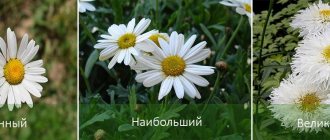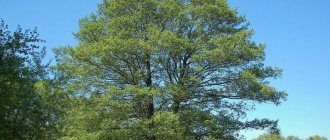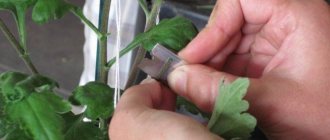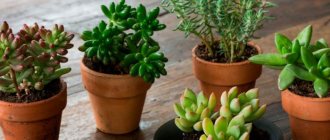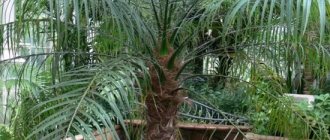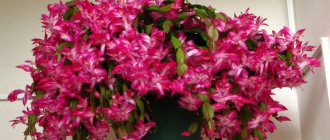Not quite a chamomile, but not a chrysanthemum either - today we will talk about a popular plant, better known as garden chamomile. Externally, the flowers are indeed very similar to daisies, but from a botanical point of view they are not. Moreover, previously they generally belonged to the chrysanthemum genus. And only over time, having carefully studied the characteristic features of the plant, it was placed in a separate genus. What is this mysterious nevus and is it difficult to grow it in the garden? Let's figure it out.
Features of the cornflower
This herbaceous perennial belongs to the Asteraceae family. Most of its varieties look like a large daisy with a yellow center and white oval petals. But there are also interesting terry varieties, reminiscent of an aster, or fluffy balls, like chrysanthemums.
As an ornamental plant, cornflower first became known in the south of Europe, where it grows everywhere, covering parks and gardens with a white carpet.
The flower has a straight flexible stem from 30 to 100 cm in height, covered with elongated oblong feathery leaves arranged alternately. At the end of the stem is a round flower about 10 cm in diameter, consisting of a yellow center surrounded by dazzling white or light yellow petals.
In the presented photos of the cornflower, you can observe various forms of inflorescences:
- simple;
- semi-double;
- terry;
- spherical.
After flowering, boxes with nivberry seeds remain at the top of the stem, which can maintain good germination for several years.
Planting cornflower in open ground
Growing from seeds
The seedling method of growing nevus has the advantage that in this case flowering occurs already in the current year. Sow cornflower seedlings at the end of February or beginning of March in boxes, cassettes, bowls or cups - the containers can be any, since in the future you will still have to pick up the seedlings. It is advisable to use not very deep dishes for sowing so that it is easier to control soil moisture.
As a substrate, use a ready-made soil mixture for flower seedlings or a mixture of high-moor peat and sand. Before sowing, the substrate and dishes are sterilized with a solution of potassium permanganate. Place a layer of drainage on the bottom of the dish, then lay down the soil, leaving the container empty 2-3 cm from the edge. Level the surface, spread the seeds, deepening them 1 cm and lightly sprinkling them with soil, then spray the surface with water from a fine spray bottle. Crops are kept at a temperature of 22 ºC, without covering with film.
- Valerian: cultivation, properties, collection
As soon as the shoots appear, the temperature is lowered by 2-4 degrees. At one month of age, seedlings are fertilized with a weak solution of mullein. When the seedlings are a month and a half old, they are planted in separate cups with a substrate of the same composition, but with the addition of a small amount of humus. In these cups, the nevus will grow from seeds until it is planted in the flowerbed. A few days after picking, the seedlings are fed again with a solution of organic fertilizer. There should be an interval of 3-4 weeks between two feedings.
Seedlings are planted in open ground in May, after the return frosts have passed, but before planting, the seedlings are gradually accustomed to the open air over the course of two weeks.
The seedlings are transplanted into holes with a diameter of 30 cm, located from each other, depending on the variety, at a distance of 30 to 70 cm. The row spacing should be at least 20 cm. At the bottom of each hole, you need to put 300-400 g of humus or compost and 20 g of complete mineral fertilizer. The seedlings with a lump of earth are transferred to the hole, after which the remaining space in it is filled with fertile soil. After transplanting the seedlings, the flower garden is watered abundantly, and when the water is absorbed and the surface dries slightly, the area is mulched with sawdust and saltpeter (20 g of saltpeter per 1 bucket of sawdust).
How to plant
When sowing cornflower directly into open ground, in the first year the plant forms a root system and a rosette of leaves, and only in the second year will you see its baskets. Sowing is carried out in early spring or autumn. In one place, nevus can grow for up to 7 years, so be careful when choosing a site.
A well-lit place with well-drained, moderately moist and cultivated soil to a depth of 25-30 cm is suitable for the cornflower. The ideal soil for this plant is black soil. On poor or dry soils, nevus forms much smaller baskets than on nutritious soil, and in shaded areas, nevus development slows down, and it does not bloom as profusely as under the bright sun. If the soil on the site is too light or heavy, you need to add 15 and 20 kg of humus, respectively, per 1 m². Heavy clay or light sandy soils, as well as too damp areas, where the plant will suffer from fungal diseases and age very quickly, are not suitable for growing nevus.
- Snapdragon: sowing seedlings using a syringe
Dig up the soil in the area, level it and make grooves at a distance of 20 cm from each other. Nielberry seeds are buried 2 cm, embedded and watered well. The next day, the crops are mulched with peat. As soon as the shoots appear, they must be thinned out. With pre-winter sowing, seedlings will appear in early spring, and if the seedlings are transplanted to a permanent place in May, then by the end of the season you may see flowering nevus. If sowing was done in the spring, by autumn the seedlings will grow into strong seedlings, which are planted in a permanent place according to the same scheme as described above, and when the seedlings take root, they are insulated for the winter.
Varieties of cornflower
The plant is very diverse and has more than fifty species. However, only a few were able to take root in central Russia. Domestic flower growers prefer common, largest, magnificent and some hybrid varieties of all types and varieties.
Contraindications
There are few contraindications for the use of this plant in treatment, but consultation with a doctor is mandatory. It is prohibited for pregnant and lactating women , as well as people with severe hypotension. People with individual intolerance to nevus should also refrain from treating with this flower. If you do not experience any signs of the above diseases, consult your doctor before use.
There may be cases when the disease has not yet made itself felt, and the use of a medicinal plant will aggravate the onset of the disease.
Daisy
This is the most common wildflower, familiar to everyone as meadow daisy. Grows up to 80 cm and blooms from late spring to mid-summer. In the flowerbeds of many gardeners you can see several of the most popular varieties:
- Maxima Kenig. Bushy plants a meter high with large inflorescences having a dark yellow center surrounded by white reed petals.
- May Queen. The stems of this flower reach a height of no more than half a meter. The main feature is elastic dark green leaves and dense flowers.
- San-Souci. Tall bushes with large white double flowers and yellow centers. They bloom in the second half of summer.
This type of plant is most suitable for growing in the regions of the middle zone, as it is absolutely unpretentious. Planting and caring for common cornflower in open ground does not require special conditions.
Reproduction by division and cuttings
Cuttings are carried out in July-August. It is necessary to take the basal shoots, which have formed a rosette, with the rhizome. The cuttings are planted in holes in the same way as seedlings. Then watering is done.
Over the course of a 4-5 year period, the nivaria grows. The flower bed becomes excessively dense. Therefore, it is necessary to divide the bushes in the spring or at the end of September after flowering.
They are dug up, the roots are shaken off the soil and sections are selected, each of which should have at least one rosette left. The divisions are transplanted at intervals of 30 cm.
Nivyanik is the largest
This species originated in the Pyrenees. Its branching shoots reach 1 m in height and end in large flowers, including double ones. Their characteristic feature is white frills around the yellow center, which make the flower look like a chrysanthemum.
The most famous varieties that have taken root in Russia:
- Alaska. Resistant to harsh climates, lives long, flower petals are arranged in one row.
- Vethoven. It has a small height (50 cm) and is a lush bush.
- Little Princess. A low-growing variety with large bright white flowers.
The largest cornflower begins to bloom in the second half of summer and ends just before frost. It does not withstand adverse weather conditions very well.
Disease and pest control
Fungal diseases often attack this plant. Niwberry is especially often susceptible to powdery mildew and rust. To eliminate their impact, it is necessary to prevent the accumulation of moisture and regularly remove dried inflorescences and stems.
If the fungus does infect the plant, then a 1% solution of Bordeaux mixture is used for treatment. It is applied up to 4 times at intervals of 10 days. It is also possible to treat nivaria with ash.
For severely affected bushes, the optimal solution is to completely cut off the stems and burn them off-site. The root part is sprinkled with ash. If the manipulations are carried out correctly, the new shoots will be normal.
Nivyanik will not only decorate a personal plot or flower bed, but will become a decorative decoration for the house. To do this, tall flowers are cut for bouquets. The plant can be combined with cornflowers and bells and looks great when decorating borders.
Magnificent cornflower
This plant is a complex hybrid, isolated as a separate species. It looks like a tall, lush bush with large white flowers and a golden center.
Of its varieties, the most famous is Luna, which, thanks to its inflorescences in the form of double hemispheres, looks like a real chrysanthemum.
What is required for sowing garden chamomile seedlings: preparation rules
Before you start sowing garden chamomile seeds, you need to properly prepare for the procedure. You need to choose the right timing, soil mixture, container, seeds. Each pre-sowing preparation point has its own rules and features:
- It is very important to sow the seeds of any crop at the right time so that the seedlings have time to grow to the required size by the optimal time of planting in the ground, and do not outgrow them. It is optimal to plant cornflower seeds for seedlings in the first half of March. In warmer, southern regions earlier, and in colder regions later.
- It is very important to choose the right soil for growing seedlings, otherwise poor-quality or unsuitable soil will slow down the development of seedlings or even destroy them. Requires loose, nutritious, light, neutral, drained soil. A universal soil mixture for flower seedlings is suitable. You can also make soil with your own hands, mix the following ingredients: non-acidic peat (2 parts), garden soil (1 part), sand (0.5 parts), humus (0.5 parts).
- To begin with, it is easier to use a spacious and shallow container (about 7 cm high). However, you can plant leucanthemum in separate containers, but the plants develop quickly and the picking process cannot be avoided, so it is easier to first plant them in a common box.
- to buy leucanthemum seeds from trusted manufacturers who have a good reputation and many positive reviews. The packaging of a quality product must contain detailed information: expiration date, packing date, contact information, address, brief description of the variety and cultivation technology, etc. It is worth noting that garden chamomile seeds have fairly good germination, so they can be sown immediately without any pre-sowing preparation. However, if you doubt the quality of the seeds or want to improve and speed up germination, you can treat the seeds in a growth stimulant solution.
Nivyaniks of hybrid varieties
Such plants are the result of crossing different species. Their advantage is that they combine the best options in appearance and quality.
For example, the Bridal Veil variety looks like a snow-white, densely double chrysanthemum, and Fiona Coghill is notable for its pompom-shaped flower, consisting of many cream-colored petals.
Description and features of Popovnik
Nivyanik is an attractive perennial herbaceous plant and the largest representative among the chamomiles. It has a medium, unbranched stem topped by a single compound flower of white petals. Their height reaches up to 85 cm. Mainly distributed in southern and central Europe. The plant is found in many habitats, especially in meadows and pastures, also on coastal cliffs, wastelands. The rhizome of the flower is usually fibrous in shape.
More information about the plant can be found in this video.
The inflorescences resemble a basket, up to 3-6 cm in diameter. The petals are reed-shaped, white in color, the center of the plant is yellow. The seeds ripen very quickly and are prone to self-sowing. Let's consider the most famous varieties of culture:
Growing cornflower
For planting in the ground, it is better to choose common Nivyanik, since varieties of other species are more capricious and difficult to take root in the climate of the middle zone.
Nielberry should be planted in an open place, since it practically does not grow in the shade. It also does not like damp, low places and clay soil.
Before planting seedlings in the holes, you need to fill the holes with drainage and fertilizers. You can add a little humus or compost. After planting, young plants should be covered with sawdust or wood chips.
Planting and caring for cornflowers
- Planting: sowing seeds directly into the ground - at the end of May, sowing seeds for seedlings - at the end of February or early March, planting seedlings in the garden - in May.
- Flowering: from early July to September.
- Lighting: bright sunlight.
- Soil: neutral or slightly alkaline, in an area with deep groundwater.
- Watering: during the rooting period, seedlings are watered frequently, but then watering will only be required during periods of prolonged drought. Water consumption per m² is 10 l.
- Top dressing: humus, peat and compost are added to the soil annually, and in mid-spring the soil is fertilized with a solution of Nitroammofoska or mullein.
- Reproduction: by seeds and dividing the bush.
- Pests: aphids, thrips, slobbering pennies and chrysanthemum miners.
- Diseases: affected by powdery mildew, gray mold, blight, stem rot, rust, fusarium and bacterial canker.
Read more about growing cornflower below.
Features of care
Nivyanik tolerates heavy fertilizers well, so it can be safely flavored with manure. The plant does not like dry soil, so it requires regular moderate moisture.
Knowing how to water a flower correctly, you can grow a bush of incredible beauty. Faded baskets must be removed so that they do not spoil the appearance of the plant. In autumn, it is better to cut off the stems and cover the rest with dry leaves.
Nivianik can be called one of the most interesting flowers in the garden. With proper care, it can become the central decoration of a flower garden. You just need to protect it from diseases, fertilize it and plant it in time. The flower looks great next to delphinium and bluebells.
Caring for nibbles in the garden
Rules of care
Caring for nevyannik is very simple. You will need to water, loosen and weed the soil around the bushes, apply fertilizing and remove wilted inflorescences in a timely manner so that they do not reduce the decorative value of the flower garden.
Water the cornflower only during dry seasons, spending up to 10 liters of water per 1 m² of flower garden. After watering or rain, the soil between the bushes is loosened, while removing any weeds that have appeared. The nivaria is fed mainly with Nitrophoska: at the beginning of growth, you will need a solution with a predominance of the nitrogen component, and when the inflorescences form - with potassium. Niwberry responds well to fertilizing with mullein solution, and if you have the opportunity to add it to the soil twice a month, then you can completely abandon mineral fertilizers, but then before flowering it is advisable to add bone meal to the soil instead of Nitrophoska.
After the cornflower fades, its decorative effect quickly declines, and then it is cut off at a height of 10-15 cm from the ground.
Pests and diseases
In damp weather, especially if the rainy season is prolonged, fungal diseases can affect the nevus. The plant suffers from rust, powdery mildew, downy mildew, spotting, fusarium, stem rot and bacterial canker. If you suspect that the cornflower is unhealthy, generously treat it with one percent Bordeaux mixture and, if necessary, repeat this treatment 2-3 more times every 10 days. But it is better to remove and burn heavily affected bushes first.
- What to feed? Depends on the stage of development of the seedling - let's figure out the proportions!
Among the pests, meadow thrips, slobbering pennies and chrysanthemum miners can pose a danger to the cornflower. You can get rid of these pests by carrying out several treatments of the bushes and the soil around them with solutions of the preparations Aplaud, Bazudin, Vermitek, Inta-vir or infusions of insecticidal plants - marigold, celandine or yarrow. However, it is better not to waste time experimenting with herbal remedies, but to immediately begin treating the cornflower with chemicals: they act both faster and more reliably.
